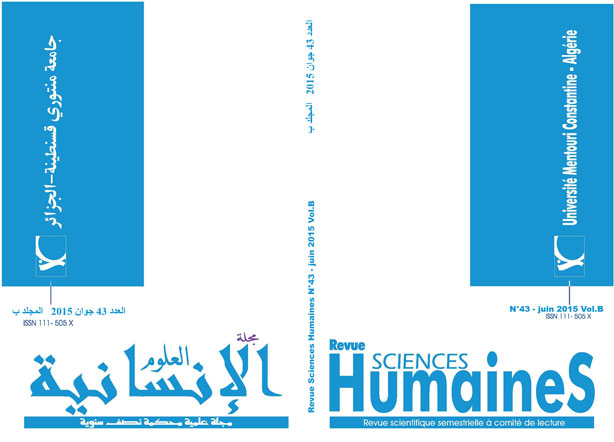Promoting Aspects of Discourse Macrostructure and Microstructure in EFL Expository Writing through Reading: A Case Study of Second Year Constantine University 1 Students
Keywords:
EFL ExpositoryAbstract
The present study sets out to investigate the extent to which comprehension of discourse structure levels accounts for competence in EFL writing organization. More specifically, it seeks to enhance the students’ awareness regarding the significance of the macrostructure and microstructure notions in writing through reading as a main source of language input and accumulation. The study has been conducted with two writing classes assigned to an experimental group and a control group. To compare the subjects’ performance in terms of the effective use of some aspects of discourse structure levels, a pre-test prior to a treatment and a post-test after the treatment have been administered in the form of in-class expository essays. Following the collection of the post-test essays, a questionnaire has been given to the experimental group subjects to elicit their opinions about the role of reading in the comprehension of discourse structure levels. The findings of the study have demonstrated a significant improvement of the experimental group in all aspects of discourse structure, while the control group has actually lowered its scores on some aspects and made insignificant improvement in others. Ultimately, the study has indicated that reading could be the best technique to develop the sense of discourse organization.
Downloads
References
- Bloom, R. L., Obler, L. K., De Santi, S., & Ehrlich, J. S. (eds). (2013). Discourse analysis and applications: Studies in adult clinical populations. New Jersey: Lawrence Erlbaum Associates.
- Eisterhold, J. C. (1990). Reading-writing connections: Towards a description for second language learners. In B. Kroll (Ed.), Second language writing: research insights for the classroom, (pp. 88- 101). Cambridge: Cambridge University Press.
- Fitzgerald, J., & Shanahan, T. (2000). Reading and writing relations and their development. Educational Psychologist, 35,39-50.
- Grabe, W. (1985). Written discourse analysis. In R. B. Kaplan (Ed.), Annual review of applied linguistics, (Vol. 5, pp. 101–123). New York: Cambridge University.
- --- . (2002). Narrative and expository macro-genres. In A. M. Johns (Ed.), Genre in the classroom: Multiple perspectives, (pp. 249-267). New Jersey: Lawrence Erlbaum Associates.
- Halliday, M. A. K., & Hasan, R. (1976). Cohesion in English. London: Longman.
- Halliday, M. A. K. (1994). An introduction to functional grammar. (2nded.). London: Rnold.
- Johnson, R. K. (1990). Developing teachers’ language resources. In J. C. Richards & D. Nunan (Eds.) Second Language Teacher Education, (pp. 269-282). Cambridge: Cambridge University Press.
- Koda, K. (2005). Insights into second language reading: A cross-linguistic approach. Cambridge: Cambridge University Press.
- Krashen, S. (1984). The input hypothesis: Issues and implications. New York: Longman.
- Lojek, E. (2009). Imaging communication in the brain. In k. Bryan (Ed.), Communication in healthcare, (pp. 1-67). Switzerland: Peter Lang.
- McCarthy, M. (1991). Discourse analysis for language teachers. Cambridge: Cambridge University Press.
- McCormack, R. L., & Pasquarelli, S. L. (2010). Teaching reading: Strategies and resources for grades K-6. New York: The Guilford Publications.
- Nwogu, K., & Bloor, T. (1991). Thematic progression in professional and popular medical texts. In E. Ventola (Ed.), Functional systematic linguistics: Approaches and uses, (pp.369- 385). New York: Mouton de Gruyter.
- Renkema, J. (2004). Introduction to discourse studies. Netherlands: John Benjamins.
- Schiffrin, D., Tannen, D., & Hamilton, H. (eds.). (2001). The handbook of discourse analysis. Oxford: Blackwell.
- Van Dijk, T. A. (1980). Macrostructures: An interdisciplinary study of global structures in discourse, interaction, and cognition. Hillsdale, NJ: Lawrence Erlbaum.
- --- . (ed.). (1985). Handbook of discourse analysis, Vol. 2: Dimensions of discourse. London: Academic Press.
- Van Dijk, T. A., & Kintsch, W. (1983). Strategies of discourse comprehension. New York: Academic Press.

















